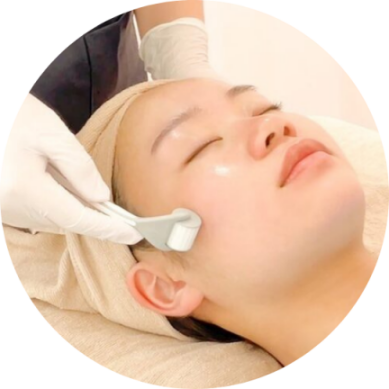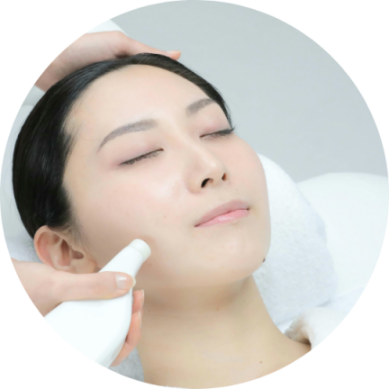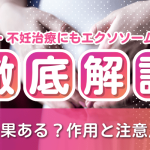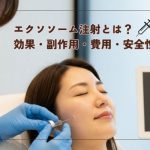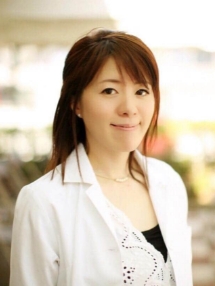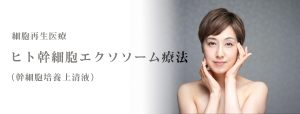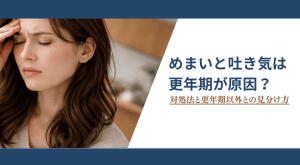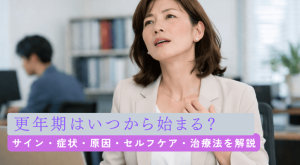Stem Cell–derived Exosome Hair Restoration in Tokyo, Japan
祝日
診療
| 診療時間 | 月 | 火 | 水 | 木 | 金 | 土 | 日 | 祝 |
|---|---|---|---|---|---|---|---|---|
| 09:30-13:00 | ● | ● | ● | ー | ● | ★ | ー | ● |
| 14:30-18:00 | ● | ● | ● | ー | ● | ー | ー | ● |
※受付は15分前終了★9:30~13:30(13:15最終受付)
祝日
診療
| 診療時間 | 月 | 火 | 水 | 木 | 金 | 土 | 日 | 祝 |
|---|---|---|---|---|---|---|---|---|
| 09:30-13:00 | ● | ● | ● | ー | ● | ★ | ー | ● |
| 14:30-18:00 | ● | ● | ● | ー | ● | ー | ー | ● |
※受付は15分前終了 ★9:30~13:30(13:15最終受付)
Stem Cell–derived Exosome Hair Restoration in Tokyo, Japan
2025/09/27
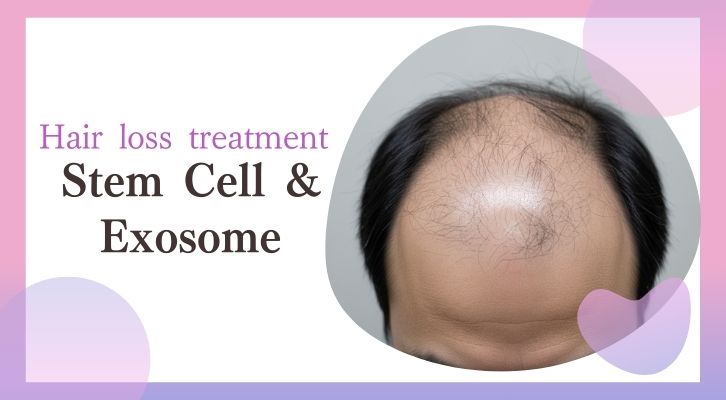
“My hair is starting to thin a little.”
That concern is something people around the world can relate to. Regardless of age or gender, the moment thinning or hair loss becomes noticeable, many feel a sense of anxiety—“What if I can never get back to how it used to be?”
Over the years, various approaches such as hair growth tonics, specialized shampoos, and even hair transplant surgery have been tried. Yet, these methods have shown clear limitations when it comes to achieving true, lasting improvement.
This is why growing attention is now being given to regenerative medicine using stem cell–derived exosomes, known as Stem Cell Hair Treatment. By working directly at the cellular level on hair follicles, this therapy offers the potential for natural and sustained results that conventional methods could not deliver.
In this article, we will take a closer look at how hair loss impacts daily life, explain the science behind this cutting-edge treatment, and introduce the safe and reliable therapy offered at Setagaya Internal Medicine Clinic.
The Harsh Reality of
Thinning Hair and Hair Loss Worldwide
Thinning hair and hair loss are serious challenges faced by millions of people, regardless of gender.
In Japan alone, it is estimated that around 12 million people struggle with hair loss. On average, men begin experiencing thinning hair at age 38.6, while for women it begins at 42.1.( AGA SkinRecruit )
The causes are varied, with genetic factors and age-related changes certainly playing a role, but stress, lack of sleep, and poor nutritional balance—pressures particularly common in modern society—are also significant contributors.
Because hair loss directly affects one’s appearance, many people suffer from the psychological burden of worrying about “how others see them.” Until now, the most common solutions have been relatively simple measures such as hair growth tonics and shampoos.
However, the effects of these treatments have been temporary at best, with clear limitations when it comes to achieving lasting, fundamental improvement.
This is why innovative regenerative medical treatments are now drawing attention. Hair loss should not be seen as merely a cosmetic issue, but as a critical concern that significantly impacts overall quality of life. Recognizing this is the first step toward finding a true solution.
Not Just Men—Hair Loss Is Increasing Among Women Too
For a long time, thinning hair was regarded as a problem unique to men.
However, in recent years, the rise in hair thinning and hair loss among women has become increasingly evident. Studies show that around 40% of women over the age of 20 experience some form of hair thinning.
Factors unique to women—such as hormonal fluctuations, pregnancy and childbirth, and menopause—are deeply connected to hair health and play a significant role in this growing concern.(Ams-smileAGA Hair Clinic)For women, losing hair volume often makes them appear older than their actual age.
In fact, among women struggling with thinning hair, 52.1% cite stress and 44.4% point to hormonal changes as the main causes. As beauty awareness continues to rise, more women now see maintaining healthy hair as an essential part of preserving their sense of identity and individuality.
In other words, hair loss is no longer just a men’s issue—it has become a serious concern for both men and women alike. People across all age groups are urgently seeking effective solutions.
The Reality That Stress Is Damaging Scalp Health
Stress from work, family, and human relationships has a profound impact on the autonomic nervous system and hormonal balance.
As a result, blood circulation in the scalp deteriorates, sebum secretion becomes unbalanced, and the function of the hair follicles significantly declines.
For women in particular, increased exposure to stressful environments through greater participation in the workforce has contributed to the rise in hair thinning. Prolonged overwork and irregular lifestyles disrupt the hair growth cycle, with increased hair shedding being one of the clearest signs.
Moreover, stress often triggers broader lifestyle disruptions, such as poor diet and lack of sleep. These secondary factors further amplify the risk of thinning hair, creating a vicious cycle that is difficult to escape.
The Limits of Traditional Treatments
Hair growth tonics and shampoos can help slow the progression of hair loss temporarily.
However, when the hair follicles themselves have lost functionality, it is difficult to expect meaningful results. Hair transplantation, on the other hand, offers faster results but comes with surgical risks, high costs, and the possibility of an unnatural appearance.
In short, most conventional treatments focus on “maintaining existing hair” rather than truly “regenerating new hair.”
This is why there is a growing demand for treatments that work at the cellular level to restore and regenerate the hair follicles themselves.
Four Major Drawbacks of Ignoring Hair Loss
in Daily and Social Life

Losing hair is not just a matter of appearance.
It can have a profound impact on a person’s psychology and social life. The feeling of “losing one’s youth” often makes people reluctant to even look in the mirror, leading to lower self-esteem.
This psychological burden can spill over into personal relationships and confidence at work, ultimately lowering the overall quality of life. What’s more, thinning hair rarely improves on its own.
In fact, if left untreated, it tends to worsen over time.
Here are four major disadvantages of ignoring hair loss:
Lower Self-Esteem and Psychological Stress
Hair is directly tied to perceptions of youthfulness and appearance, strongly influencing self-image.
Thinning hair often creates the impression of looking “older” or “less clean-cut,” and individuals become highly sensitive to how others perceive them. Psychologically, changes in appearance are linked to reduced self-esteem and an increased risk of depression or social withdrawal.
In fact, a survey by the American Academy of Dermatology (2020) reported that about 40% of men with hair loss experienced a “loss of social confidence.”
Impact on Relationships and Romance
First impressions are crucial in human relationships. In dating and marriage prospects especially, appearance directly affects attraction and interest.
A social psychology study in Germany found that men with a full head of hair were more likely to be perceived as “healthy” and “socially dominant” compared to balding men (Psychology, Health & Medicine, 2019).
This isn’t just a matter of personal preference—evolutionary psychology suggests that abundant hair is subconsciously recognized as a symbol of youth and health.
Loss of Confidence Affecting Career and Social Life
When people begin avoiding public speaking or having their photos taken, their social interactions become limited. Prolonged lack of confidence may also make individuals hesitant about promotions or job changes, which can negatively affect their careers.
Workplace image management is another area where hair loss plays a role. According to a CareerBuilder report, candidates perceived as “youthful and healthy” are often favored in interviews and promotions.
While hair loss does not diminish one’s abilities, impressions such as looking “older” or “less energetic” can work against career advancement.
In Japan, recruitment surveys have also shown that some hiring managers admit to seeing hair loss as a negative factor in first impressions.
Restrictions in Daily Life
Appearance changes are directly tied to self-perception. Hair, in particular, is seen as a “symbol of youth.” As hair loss progresses, fear of being perceived as older grows, gradually undermining motivation in daily activities.
Many people with hair loss start limiting small everyday actions—hesitating to remove a hat at the pool or hot springs, or avoiding public places on windy days.
These limitations extend beyond social settings into hobbies and leisure activities, lowering overall life satisfaction. Feelings of “I used to be more confident and outgoing” may emerge, fueling further psychological distress. Such effects cannot simply be dismissed as “just in the mind.”
Is It Too Late If You Wait? The Dangers of Progressive Hair Loss
Hair loss progresses over time, and in some cases, the hair follicles lose their function completely. Once this happens, recovery with conventional treatments becomes extremely difficult. Early intervention is absolutely critical.
Many people think, “It’s not that bad yet,” and delay treatment—only to find that improvement becomes harder over time. This is the reality. Taking action before the follicles are permanently lost is the key to effective treatment.
A New Answer Born from Regenerative Medicine,
Stem Cell Hair Treatment
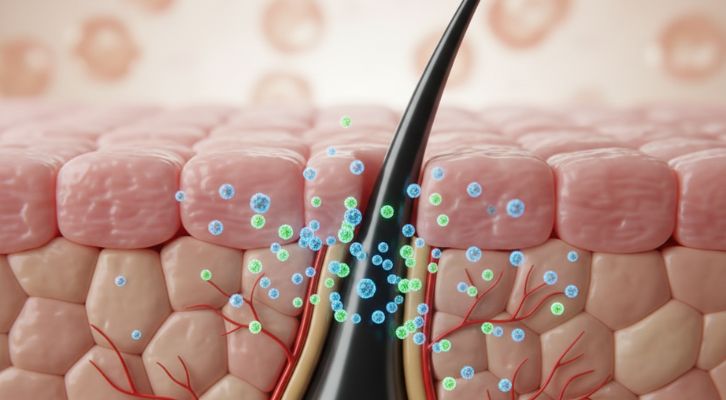
In recent years, remarkable advances in regenerative medicine have brought new hope to the field of hair restoration. One of the most promising breakthroughs is the use of stem cell–derived exosomes for treating hair loss.
Exosomes are tiny particles responsible for communication between cells, playing a crucial role in tissue repair and regeneration.
These vesicles, secreted by cells, measure just 50–150 nanometers in size—roughly one ten-thousandth of a millimeter—and are packed with RNA, DNA, and proteins. By harnessing these properties, exosomes can act directly on hair follicles, stimulating new hair growth.
What sets this therapy apart is its potential to achieve fundamental improvements that conventional treatments could never provide. With strong government support, Japan has long been a world leader in regenerative medicine.
This ensures a system where both safety and effectiveness are prioritized—a key reason why global attention is now focused here.
Let’s take a closer look at how exosomes help rejuvenate weakened hair follicles.
How Stem Cell–Derived Exosomes Revitalize Hair Follicles
Exosomes target hair matrix cells and dermal papilla cells, reactivating weakened follicles. They promote the proliferation and activation of dermal papilla cells, which provide vital support for hair growth. This restores the natural hair cycle and creates the right conditions for new hair to grow.
Studies show that exosome therapy can suppress the regression of dermal papilla cells by up to 45%. In other words, it extends the growth phase of the hair cycle, reduces shedding, and promotes longer-lasting growth.
Because this treatment works at the cellular level, it offers more natural results than traditional topical medications or surgical hair transplantation. It represents a groundbreaking step forward in hair restoration.
Moreover, since exosomes serve as carriers of biological information, they can deliver active molecules to follicle cells more efficiently and stably than conventional mesotherapy.
Reducing Scalp Inflammation
and Creating an Ideal Growth Environment
Chronic inflammation and poor circulation are often underlying factors in hair loss. Exosomes have anti-inflammatory properties and support tissue repair. They also promote angiogenesis—the formation of new blood vessels—and studies have confirmed a significant increase in angiogenic factors after treatment.
This dual action helps improve scalp health and provides an ideal environment for hair follicles to thrive.
Rather than simply “adding hair,” exosome therapy works to enrich the very foundation where hair grows. It can be compared to cultivating fertile soil by restoring the scalp’s natural balance, the hair is able to grow stronger and healthier.
Five Reasons
Why Japan’s Medical Care Is Chosen Worldwide
With strong government support, Japan is advancing eight major research programs using iPS cells to regenerate the retina, heart, platelets, immune cells, and more. These efforts are said to be several years ahead of other leading regions such as Europe, the United States, and China.
So why do patients from overseas travel all the way to Japan specifically for exosome therapy? Here are five key reasons:
A Leading Accumulation of Regenerative Medicine Research
Japan has earned global recognition for its pioneering work in regenerative medicine, especially in iPS cell research.
Nationally supported projects involving the retina, heart, and immune cells have expanded into applications such as hair restoration. The high level of research serves as the foundation for the reliability of clinical treatments.
Strict Quality Control that Meets International Standards
Exosome formulations used in treatment are produced under rigorous quality control, in compliance with the standards set by the International Society for Extracellular Vesicles (ISEV).
In Japan, every step from manufacturing to clinical application is transparently traceable, ensuring safety and reliability. This thoroughness behind the scenes is a unique strength of Japanese medicine.
Physician-Led, Comprehensive Care
At Japanese medical institutions, doctors are directly involved throughout the entire process—from diagnosis to treatment and aftercare.
Should any unexpected reactions occur during therapy, immediate expert evaluation and intervention are available. For international patients, the reassurance of “always having a doctor by your side” is one of the strongest reasons for choosing Japan.
A Culture That Prioritizes Ethics and Safety
Japan has established robust legal frameworks such as the Act on the Safety of Regenerative Medicine.
All treatments must undergo ethical review and safety verification before being offered to patients. The principle of “delivering only what has been confirmed to be safe” reflects the very essence of Japan’s medical culture.
A Unique Patient Experience Combining Medicine and Hospitality
Japanese medical care is not only backed by science but also characterized by attentive patient-centered service.
From reception to treatment and aftercare, the approach is meticulous and compassionate. For patients traveling from abroad, this blend of hospitality and medical excellence ensures a truly reassuring treatment experience.
Before and After of Exosome Treatment
at Setagaya Internal Medicine Clinic
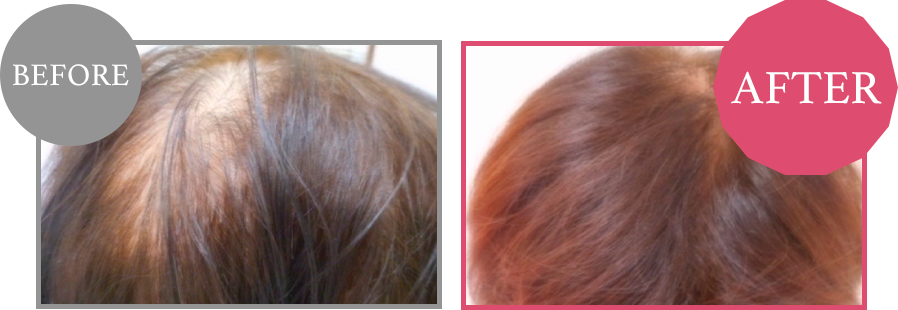


\ Growth Factors × Medical Microneedling /
Setagaya Internal Medicine’s Safe and
Reliable Exosome Scalp Treatment Program
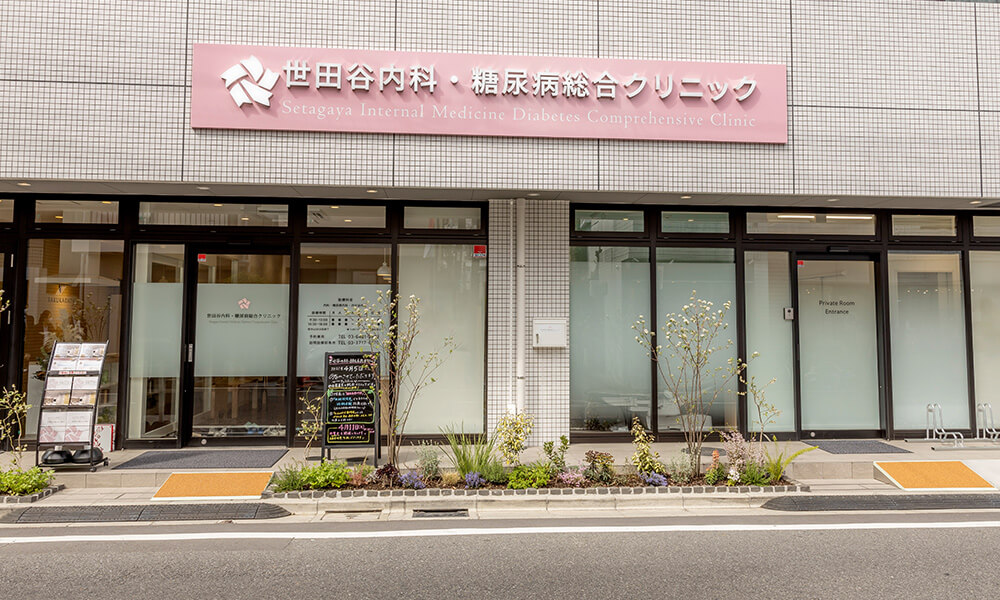
Since its opening in 2021, Setagaya Internal Medicine & Diabetes Comprehensive Clinic has been continuously offering treatments using stem cell–derived exosomes, including nasal sprays and eye drops.
In recent years, many exosome-containing nasal and eye drops have been marketed online and through social media advertisements. As a result, our clinic has received numerous inquiries regarding the quality and manufacturing background of these products.
To address these concerns, we would like to outline the key features and precautions of the exosome nasal sprays we provide.
Collagen Induction Therapy
This therapy stimulates the skin’s natural ability to produce collagen and elastin. As a result, patients can expect improved elasticity, hydration, firmness, and a natural lifting effect, giving the skin a healthier, more radiant appearance.
Because the treatment rejuvenates the skin without surgery, it offers a natural-looking result. It is also minimally invasive and involves little downtime, making it one of the most widely recognized and sought-after aesthetic procedures around the world today.
Restore your natural beauty
Growth factors play a vital role in activating cellular functions and supporting the production of collagen and elastin. By delivering them directly to the skin and scalp, we stimulate repair and regeneration at the cellular level.
This process helps restore firmness and elasticity to the skin, while also improving the scalp environment to support healthier hair growth. Unlike topical products that remain on the surface, this treatment penetrates deeper layers to achieve a more natural and fundamental rejuvenation.
Three Key Features of Our Treatments
Aesthetic medicine can help improve concerns about the skin and hair while restoring self-confidence.
However, many people worry about two common drawbacks: pain during treatment and downtime afterward. In traditional procedures, discomfort, redness, and swelling were often considered unavoidable.
At Setagaya Clinic, we have overcome these challenges by integrating cutting-edge medical devices with the latest knowledge in regenerative medicine.
As a result, we are able to offer advanced, low-pain aesthetic treatments that are now attracting attention from patients around the world.
Direct Penetration into the Skin and Scalp
We use a “needle-free injector” that delivers growth factors and stem cell–derived exosome culture supernatant beneath the skin without needles. This approach minimizes discomfort and reduces downtime dramatically. Patients can return to their normal daily routines almost immediately after treatment.
Cell Turnover Stimulation with Certified Medical Devices
Our clinic is officially recognized by Dermaroller GmbH in Germany. With microneedling, extremely fine needles create tiny micro-channels in the skin. This stimulates the skin’s natural healing process, accelerates cell turnover, and activates collagen production. The result is improved firmness, elasticity, and visible reduction in wrinkles and sagging.
Long-Lasting Results with Collagen Induction Therapy (CIT)
Microneedling is also known as Collagen Induction Therapy (CIT). Studies have shown that even a single session can increase collagen production by over 300%, with results peaking 24 hours after treatment. Visible improvements typically appear within 3 to 12 weeks, and maximum results are achieved over 6 to 12 months. Newly generated collagen can last for more than a year, and regular treatments help maintain and extend these long-term benefits for both skin and scalp.
Strict Manufacturing Standards and Safety to Protect the Quality of Stem Cell Culture Supernatant

The stem cell culture supernatant we use (max NFC / CLASS / EXOPure) is produced under the same rigorous standards as those applied to intravenous infusion therapies. This ensures that even when used as a nasal or eye drop, the same level of quality and safety is maintained.
- No antibiotics, preservatives, or synthetic additives (such as EGF) are ever included.
- Our formulations are produced by specialized culture technicians using a unique “natural culture method,” ensuring a high concentration and stable presence of exosomes.
- All manufacturing takes place in a Ministry of Health, Labour and Welfare–approved domestic CPC (cell processing center) within our affiliated group. Every step of the process is designed to completely remove impurities such as ammonia.
We also place great emphasis on the stem cells used as raw material. Unlike many other facilities, we never use frozen cells. Instead, fresh stem cells from living donors are transferred to culture within 24 hours, preserving their natural freshness and activity to the fullest extent when producing the supernatant.
Important Notice: About “Imitation Products” of Our Stem Cell Exosomes
Recently, we have seen an increasing number of advertisements online promoting various culture supernatants containing stem cell–derived exosomes. As inquiries regarding the differences between these products and ours have grown, we would like to provide clarification here.
The stem cell exosome–containing supernatants handled at Setagaya Internal Medicine & Diabetes Comprehensive Clinic (max NFC, CLASS, EXOPure) are the same formulations we also use in intravenous therapy. These products are manufactured without antibiotics or preservatives, and we do not add externally produced components such as EGF to the culture medium. Instead, experienced culture specialists use our unique “natural culture” technique to produce ultra–high-concentration stem cell supernatants. All manufacturing takes place at CPC facilities in Japan approved by the Ministry of Health, Labour and Welfare.
(All impurities, including ammonia generated during the culture process, are completely removed.)
For the stem cells used as raw material, we never use frozen cells. Fresh stem cells are collected from donors and transferred into culture within 24 hours to produce exosome-containing supernatants.
(By contrast, stem cells preserved in frozen storage before culture often sustain partial cell damage.)
At present, the market is flooded with products of widely varying quality, and some are said to be diluted dozens or even hundreds of times compared to proper medical concentrations.
The stem cell culture supernatants we use are produced under the same strict safety standards as those used in regenerative medicine for intravenous therapy. They undergo rigorous checks at every stage of the manufacturing process to ensure consistency and uniformly high quality. Moreover, they are formulated with the same ultra-high concentration of stem cells and exosomes—boasting an exceptionally high cytokine content—that we use in infusion therapy.
Why Our Exosome Nasal Spray Is Safe to Use
In today’s market, there are products that are heavily diluted compared to proper medical concentrations, as well as those lacking sufficient evidence of safety. Using such products not only reduces effectiveness but may also pose health risks.
At Setagaya Internal Medicine Clinic, we provide only formulations that meet the same strict quality standards used in regenerative medicine and are proven safe for medical use.
- Each production lot undergoes component analysis and quality verification.
- The culture supernatant, rich in high concentrations of cytokines and exosomes, is carefully processed into nasal and eye drop formulations.
- The concentration is equivalent to that used in intravenous therapy.
Because of these standards, our exosome nasal spray has even been adopted in medical facilities for inpatient rehabilitation of neurological disorders. Patients can use our products with confidence, knowing they are backed by both safety and proven quality.
Thorough Initial Consultation to Understand Your Needs
At Setagaya Internal Medicine, we place great importance on careful listening. During your first consultation, we take the time to understand your scalp condition, past treatment history, lifestyle habits, and personal goals in detail.

For about 13 years, I have been involved in the prevention and treatment of a wide range of internal medicine conditions at university hospitals, community hospitals, home care settings, and as a clinic director in Tokyo. In 2021, I founded Setagaya Internal Medicine Clinic.
From the very beginning, our clinic has actively incorporated treatments using stem cell–derived exosomes as part of our comprehensive medical care.
We place great importance on open communication with each patient, carefully tailoring treatment methods and selecting the most appropriate type of exosome to suit individual conditions.
– Director, Setagaya Internal Medicine & Diabetes Comprehensive Clinic
- Board-Certified Diabetes Specialist, Japan Diabetes Society
- Board-Certified Anti-Aging Specialist, Japan Society of Anti-Aging Medicine
- Certified Physician of Internal Medicine, Japanese Society of Internal Medicine
- Certified Industrial Physician, Japan Medical Association
- Certified Food Education Practitioner, Japan Taste Education Association
- Certified Food Coordinator, Japan Food Coordinator Association
Flexible Treatment Plans Tailored to Each Patient
Treatment frequency and duration are adjusted individually. Depending on the progression of your symptoms and the level of improvement you wish to achieve, we design an optimal plan that balances effectiveness and comfort. Our priority is always to deliver both results and peace of mind.
Treatment Flow
- Initial Medical Consultation

Before starting the treatment, an initial medical consultation with a physician is required.
This step is essential to accurately assess the condition of your scalp and to determine the most suitable treatment plan. During the consultation, the doctor will carefully review your symptoms, examine your scalp, and discuss possible options.
Based on this evaluation, the appropriate course and number of sessions will be recommended. The entire process is quick and efficient, typically taking only 10 to 15 minutes, making it easy to fit into a busy schedule.
Note: The initial consultation is not about having a treatment plan imposed on you. Rather, it is a collaborative process in which the physician and patient decide together on the most appropriate approach, ensuring peace of mind before beginning the treatment. - Microneedling Procedure

For facial treatments, microneedling is performed using a dermaroller applied across the entire face, with special attention given to areas of particular concern.
The same method is also used for the scalp, where microneedling helps create micro-channels that enhance absorption and stimulate natural healing responses.
The procedure is relatively quick and comfortable, typically taking about 10 to 15 minutes to complete.
Note: Microneedling is designed to gently stimulate the skin and scalp without causing significant discomfort, making it a safe and effective preparation step for subsequent treatments such as exosome therapy. - Infusion Process After Microneedling

Once microneedling has been completed on the face and/or scalp, the next step is the infusion process using a JET device.
This technique allows the selected solution to penetrate effectively into the treated areas, enhancing the overall benefits of the procedure.
On average, between 900 and 1,000 micro-jets are applied during each session to ensure even and thorough delivery.
The process is efficient and well-tolerated, typically taking about 10 to 15 minutes to complete.
Note: The JET infusion is designed to maximize absorption while remaining gentle on the skin and scalp, providing patients with both safety and comfort throughout the treatment.
We provide a tailored approach based on your individual concerns as well as the condition of your scalp and hair. Please feel free to reach out to us for a consultation at any time.
Aftercare and Recovery
During the natural healing process, mild inflammatory reactions such as redness or slight swelling may occur. However, these symptoms are temporary and generally subside on their own over time.
On the day of treatment, it is important to keep both the scalp and face at rest and to avoid any stimulation, such as shampooing or rubbing the treated areas. Detailed aftercare instructions will be provided directly by the physician, ensuring that you can undergo the treatment with confidence and peace of mind.
What is Collagen Induction Therapy?
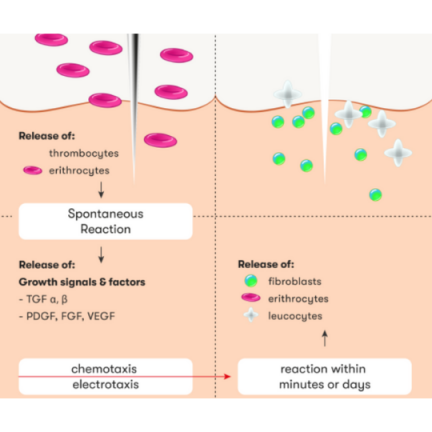
Collagen Induction Therapy, also known as Percutaneous Collagen Induction (CIT / PCI), is a treatment performed with microneedling, where tiny controlled micro-channels are created on the skin’s surface.
These micro-injuries close quickly, leaving no scars, and immediately trigger the body’s natural healing response. As the skin begins to repair itself, fibroblasts are activated, leading to increased production of collagen and elastin. This process results in improved elasticity, firmness, and a natural lifting effect.
Clinical studies have shown that even a single session can increase collagen production by more than 300%, with the effect peaking about 24 hours after treatment. Visible improvements typically appear within 3 to 12 weeks, and maximum results are often observed between 6 to 12 months.
Newly produced collagen can last for over a year, and regular treatments help to extend and enhance these benefits. For this reason, CIT is widely recognized not only for reducing wrinkles and sagging but also for improving overall skin quality through a regenerative approach.
How Many Sessions Are Needed to See Results?
For cosmetic goals such as skin rejuvenation or anti-aging, individual responses can vary. In the case of thinning hair and AGA, the underlying cause is a disrupted hair cycle, so restoring that cycle takes time.
Most patients begin to notice improvements around 3–4 months after treatment starts. The exact number of sessions needed differs by case, but we carefully monitor progress and adjust the plan accordingly.
Typically, patients visit once every 1–2 weeks to once a month, with multiple sessions recommended. The schedule is always customized based on the physician’s diagnosis.
If you are already receiving exosome therapy abroad, please consult with us in advance for safe coordination.
Physician-Supervised Care for Safety and Reliability
Because stem cell–derived exosome therapy is a medical procedure, specialized knowledge and oversight are essential. At Setagaya Internal Medicine, all treatments are supervised by physicians, with strict control over both treatment protocols and the quality of formulations used.
Exosome therapy is generally considered to have minimal side effects and no downtime. Since exosomes are naturally present in the human body, the risks of infections or severe reactions such as anaphylaxis are extremely low.
Cost of Exosome Treatment
The cost of exosome therapy varies depending on the treatment method. For injections, the average price is around ¥50,000 to ¥100,000 per session. Since exosome therapy is generally not covered by insurance, it is offered as self-funded medical care.
For intravenous drips, the cost typically ranges from ¥30,000 to ¥200,000 per session. This variation depends on factors such as the source of the cultured exosomes and the concentration of active components used.
At Setagaya Internal Medicine, we strive to keep treatment as accessible as possible by offering reasonable pricing while maintaining the highest quality of exosome formulations.
For patients considering multiple sessions, we also provide course plans. Full details are explained during the initial consultation.
max NFC Premium 2cc
This is the world’s only human stem cell culture supernatant created by combining all four of these cell types. It represents the forefront of regenerative medicine.
| Price | ¥336,000 |
| 3-Session Package | ¥716,400 |
THE CLASS – Umbilical Cord–Derived (2cc)
This product is developed using umbilical cord–derived mesenchymal stem cells, which are among the youngest and most biologically active stem cells available. Their rarity and regenerative potential make them highly valued in advanced regenerative medicine.
| Price | ¥198,000 |
| 3-Session Package | ¥475,200 |
EXO PURE – Dental Pulp / Adipose–Derived (2cc)
EXO PURE is an ultra-high-concentration stem cell culture supernatant, available in two types—dental pulp–derived and adipose–derived. Both formulations are distinguished by their exceptionally high cytokine content, making them among the most advanced and potent products currently used in the field of regenerative medicine.
| Price | ¥206,092 |
| 3-Session Package | ¥516,240 |
The human stem cells used in this product have been thoroughly tested to ensure safety. No evidence of viral infections such as HIV-1, HIV-2, HBV, HCV, HTLV-1, or HTLV-2, nor bacterial contamination including mycoplasma, has been detected.
Before shipment, each batch undergoes rigorous testing based on the same standards applied in certified cell processing facilities for regenerative medicine. The following quality control tests are performed:
- Bacterial contamination test
- Endotoxin test
- Cytokine profile test
Note:These comprehensive safety evaluations are designed to guarantee that only high-quality, safe, and reliable stem cell products are used in treatment.
FAQ
The human body is composed of approximately 60 trillion cells, which can broadly be divided into two types: stem cells and somatic cells. Somatic cells are differentiated cells that make up the skin, organs, and tissues. Stem cells, on the other hand, have the unique ability to promote repair and regeneration of damaged tissues. In regenerative medicine, stem cells are used for their remarkable capacity to restore and heal other tissues.
Stem cell transplantation is a treatment in which stem cells themselves are transplanted into the body. There are two types: autologous transplantation, where a patient’s own cells are reintroduced, and allogeneic transplantation, where donor cells are used. In both cases, the cells themselves are transplanted directly.
By contrast, stem cell culture supernatant therapy does not involve transplanting whole cells, and therefore carries no risk of uncontrolled cell growth or tumor formation. Instead, it uses only the supernatant fluid, which contains abundant growth factors (cytokines) and other bioactive substances secreted by stem cells. This supernatant is produced under strict manufacturing processes, ensuring a safe and stable formulation.
The level of discomfort is generally very mild, and most patients tolerate the procedure comfortably without anesthesia. For microneedling with a dermaroller, very fine needles (about 0.3 mm) are used, and the majority of patients report little to no significant pain. When using the JET device for needle-free infusion, many patients describe the sensation as gentle and even pleasant.
Treatments can be performed once a week. For optimal results, it is generally recommended to receive one session every three weeks, with a total of 3 to 5 sessions depending on individual needs and response.
Some patients may notice mild redness or a warm sensation in the treated area immediately after the procedure. In rare cases, minor bruising can also occur. However, these symptoms are temporary and usually resolve naturally within a few days.
Stem cell-derived exosome supernatant is considered safe because it does not involve the transplantation of whole cells, significantly reducing the risk of infections or immune reactions. Exosomes are extracellular vesicles, and current studies suggest that they carry a very low risk of side effects, making them a promising and safe option in regenerative therapies.
Regarding the Use of Unapproved Medical Devices and Products
| Disclosure of Unapproved Status | Please note that maxNFC, THE CLASS, and EXO PURE are medical products and devices that have not yet been approved by the Japanese regulatory authorities. |
| Source of Products | The stem cell culture supernatants used in these treatments are manufactured as reagents in licensed cell processing facilities certified by the Minister of Health, Labour and Welfare of Japan. They are administered under the responsibility of a licensed physician and only with the patient’s informed consent. |
| Availability of Equivalent Approved Products in Japan | There are currently no other domestically approved medical products in Japan with the same components or performance. |
| International Safety Information | To date, no safety concerns or adverse effects related to these products have been reported in other countries. |
| Method of Use | The culture supernatant is selected according to the patient’s condition and is administered via intravenous infusion. |
| Risks and Possible Side Effects | ・Pain or minor bruising at the infusion site may occur. ・No other specific adverse effects from exosome use have been reported so far; however, absolute safety cannot be guaranteed. ・If you experience symptoms such as general fatigue, fever, rash, or itching, please consult with your physician immediately. It has been confirmed that the exosomes used in this treatment do not promote the growth of cancer cells. However, if you are concerned about the possible presence of hidden cancer cells in your body, we recommend undergoing cancer screening before starting treatment. |
| Important Precautions | ・This treatment cannot be performed if you are pregnant or may be pregnant. Please inform your physician in advance. ・Depending on your current medical conditions or ongoing treatments, this therapy may not be suitable. It is essential to disclose your full medical history and any medications you are currently taking. ・In October 2006, the Japanese Ministry of Health, Labour and Welfare issued guidance requesting that individuals who have received human-derived placenta injections refrain from donating blood. Similarly, since stem cell-derived exosome preparations are also biological products, patients who undergo this treatment will not be eligible for future blood donation. |


